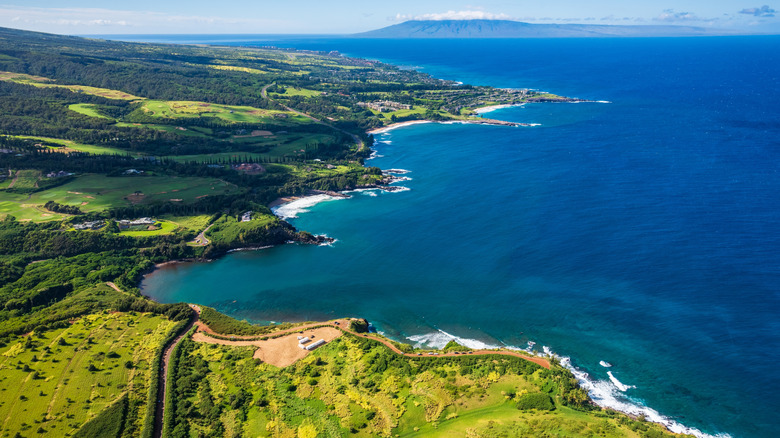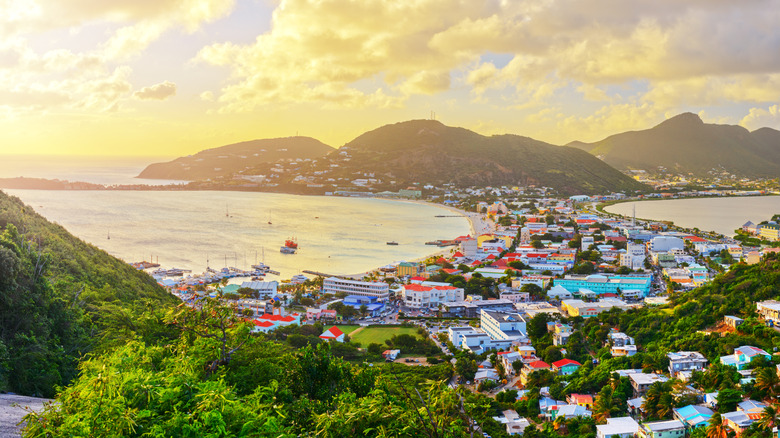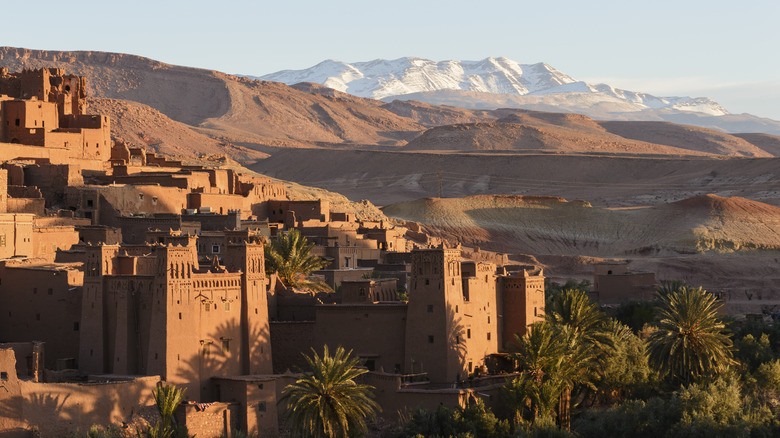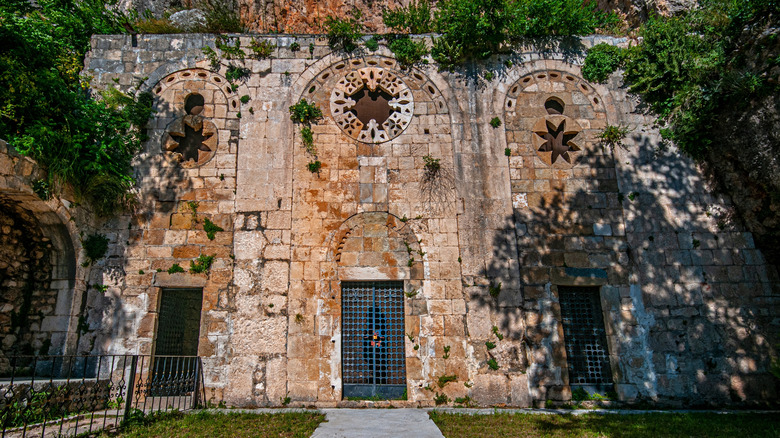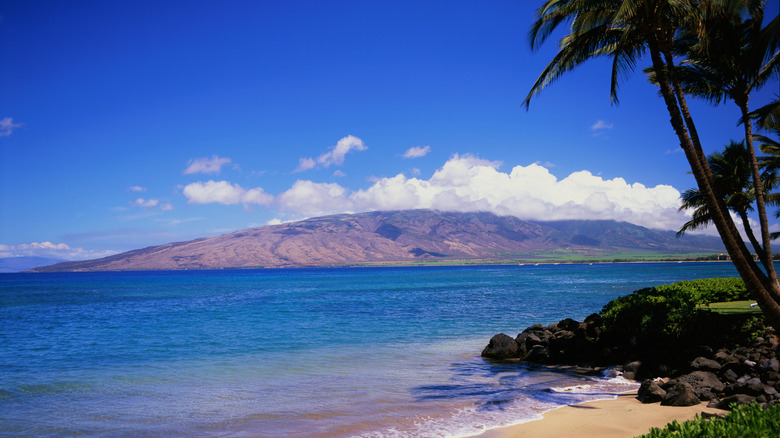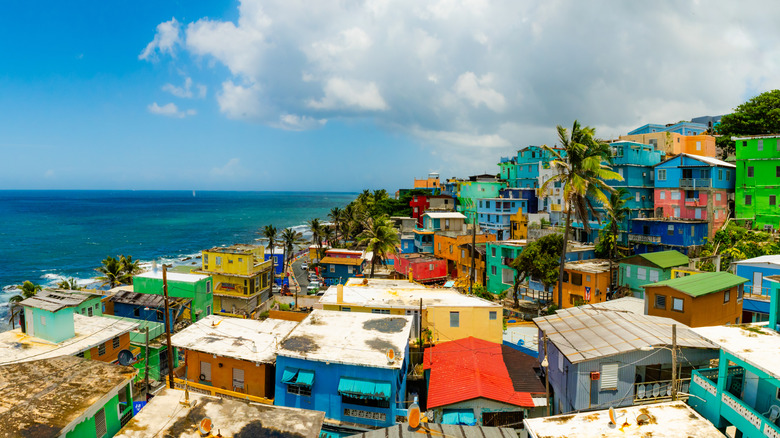Destinations Damaged By Natural Disasters That Can Finally Be Visited Again
Considering a trip to a destination that recently experienced a natural disaster can be a difficult decision to make. Though a place may be a popular vacation spot, as a conscious traveler, you never want to burden the local community, drain resources, or trivialize an event that impacted so many. However, there comes a time when the destination has rebuilt and can accommodate visitors once again. And when the local government and community express that their homes are open for visitation from travelers, planning a trip there could be of great benefit in the recovery process.
When visiting locales that have recently recovered from, or are still in the process of recovering from, a natural disaster, remember to be respectful. The activities that you choose to do, where you stay, and what you buy all carry a certain level of responsibility. Be mindful that this is a country or city hoping to rebuild and recover, so try to make choices based on how they best help local populations. For instance, stay at locally owned lodgings or shop small and at local businesses for souvenirs. Choose activities led by local guides, and dine at local restaurants, rather than at large chains. Your stay, and the revenue generated from your stay, will create income and directly support the local people affected by the natural disaster. Considering these tips on how to travel responsibly, these destinations exemplify those that were damaged by natural disasters but can finally be visited again.
The Caribbean, welcoming visitors after catastrophic hurricanes
Hurricanes Irma and Maria rocked the Caribbean region, impacting the area in two successive, extremely destructive storms in 2017. For a year after the hurricanes, islands in the storms' paths, like Puerto Rico, were still without power in many areas. Though many popular cruise ports remained open and many islands were able to reopen to tourists rather quickly, it's taken years for the region to welcome the full volume of visitors back. Proudly, the Caribbean is now welcoming tourists in full force.
St. Maarten, for instance, an island of dual French and Dutch governments, unveiled its rebuilt arrivals hall at Princess Juliana International Airport in the fall of 2024, marking an end to temporary arrival facilities, largely in tents, since the storms. A hub for regional, inter-island flights and larger aircraft arriving from North America, Europe, and Central America, the airport had been operating in temporary, ever-shifting facilities. But now, with extensive modern renovations and hurricane reinforcements in place, the airport is hoping to return to its pre-storms, pre-pandemic capacity.
Puerto Rico is another island that's stronger and better than ever after the hurricanes, with resorts like the Caribe Hilton welcoming visitors to celebrate important hotel anniversaries and to experience the resort's post-hurricane facelift. Meanwhile, destinations like Barbados, Jamaica, and The Bahamas continue to observe record-breaking visitation figures. In recovering from hurricanes and tropical storms, the Caribbean eagerly welcomes visitors, and there are a number of Caribbean tourist destinations that every traveler should have on their radar, whether you love water sports, prefer lounging on the beach, or are into hiking.
Tourism in Morocco post earthquake
Morocco is a country that relies heavily on tourism and overseas visitation to stimulate its economy, so when the country experienced successive disasters, it was devastating to its people. First the COVID-19 pandemic shuttered the country's borders. Then, just as Morocco welcomed visitors back after the historic hiatus, it experienced a crushing 6.8-magnitude earthquake on September 8, 2023. Centered in the High Atlas Mountains region of the country, the earthquake claimed as many as 3,000 lives, injured over 5,000 people, and destroyed some 55,000 homes. In the wake of such destruction, the Moroccan people remained resilient, and questions of whether or not it was prudent to visit the area soon came to a head.
Local Moroccans, in a New York Times piece, emphasized the importance of tourists still traveling to more metropolitan areas of the country that were not majorly affected by the earthquake. Stimulating the economy was, in their eyes, a way to support and contribute funds for recovery and relief efforts for the mountainous, rural areas that observed the most destruction. As soon as a month after the disaster, airports in Morocco were operating as normal, and, fortunately, major roads throughout the country were not damaged. Today, over a year later, local people still espouse on why tourism is essential to Morocco's overall recovery. In an interview with The Independent, Youssef Id Boullite, a tour operator local to the Atlas Mountains, commented that travelers' dollars in Morocco are even more important today, as they provide direct funds to families and locals still rebuilding their lives.
Türkiye's rise in visitation after earthquakes
Only seven months before the horrific Moroccan earthquake, Türkiye experienced its own devastating natural disaster, a 7.8-magnitude quake that took the lives of over 50,000 people in southern Türkiye, destroyed more than 38,000 buildings, and affected millions of other people. Destruction and casualties were even experienced in neighboring Syria, and the quake was felt as far as Egypt. This earthquake was the most catastrophic trembler that the region had experienced in decades, and an equally cataclysmic 7.5-magnitude aftershock only exacerbated the region's devastation.
All cities and areas in the country — even those that were normally popular tourist-friendly destinations in Türkiye — experienced a major downturn in visitation, and recovery was not as swift as some other regions post disaster. In 2019, an impressive 45 million people visited the country, but the earthquakes of 2023, along with the pandemic, briefly put a pause on Türkiye's hopes of reaching those numbers again. However, by the end of the year, over 49 million international travelers had returned to the country, ushering in much-needed revenue. Provinces around the hardest-hit areas of Hatay and Kahramanmaraş emphasized that they were "ready for visitors," as described by Berry Vos, a tour operator, in a interview with Lonely Planet, noting that "the eastern part of Türkiye is very big" and that "most of these beautiful places are open."
Maui's recovery after historic fires
When utterly devastating images from the Maui wildfires in August of 2023 took over media airwaves, the American populace watched in shock at the breadth of the destruction. A combination of historically strong winds and dry weather contributed to the rapid spread of flames across Lāhainā, Upper Kula, Upper Makawao, and Olinda. It was one of the deadliest wildfires in American history; over 100 people perished and over 2,000 structures were lost. Maui, a popular Hawaiian destination, was affected not only by the incredibly tragic events of the wildfires but also in its loss of vital income. Only two months after the fires ripped through the western part of the island, Maui officially reopened to tourism, understanding that traveler dollars were an essential stream of revenue for recovery. However, the fires and tourism thereafter prompted a conversation on how travel to Hawaii could be more sensitively facilitated.
While tourism still remains low compared to early 2023, the Hawaii Tourism Authority, in a unifying message that dispelled some of the mixed-sentiments of whether or not to visit Maui, has made it clear that it welcomes visitors back to Maui once again. The group feels the worst is behind us, and visitors are encouraged to come back to Maui, albeit with sensitivity and open hearts toward what the local community has been through. Similarly, the Hawaii Visitors and Convention Bureau hopes that the spring of 2025 will bring in a renaissance of travel to the island, prompting more regrowth and recovery.
Why you should visit these destinations
For this list, we researched a number of natural disasters in tourist-heavy regions, and we paid particular attention to those countries and cities where locals and government entities emphasized that their homes were open for tourism. These countries and regions already had infrastructure and experience in facilitating tourism, so the absence of the industry was hard felt. Thus, for many of these areas, communicating a return of visitation was one of great importance and priority. With that said, remember to do research on local spots to patronize when you're traveling, be respectful in your interactions in these regions, and always take note of safety protocols.
